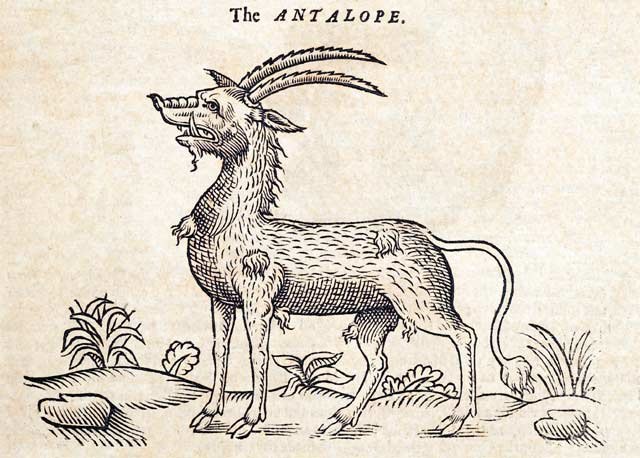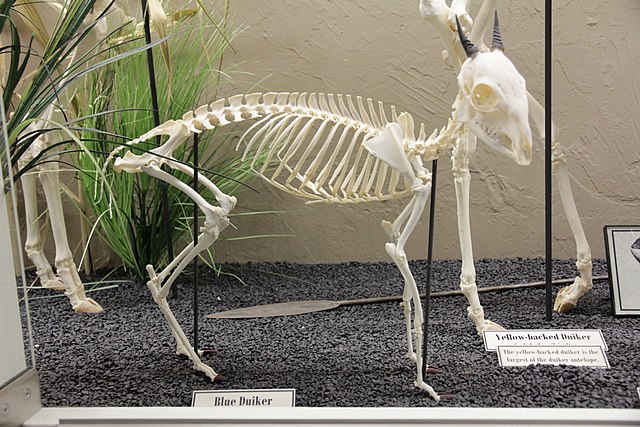The royal antelope is a West African antelope recognized as the world's smallest. It was first described by Swedish zoologist Carl Linnaeus in 1758. It stands up to merely 25 cm (10 in) at the shoulder and weighs 2.5–3 kg (5.5–6.6 lb). A characteristic feature is the long and slender legs, with the hindlegs twice as long as the forelegs. Horns are possessed only by males; the short, smooth, spiky horns measure 2.5–3 cm (0.98–1.18 in) and bend backward. The soft coat is reddish to golden brown, in sharp contrast with the white ventral parts. In comparison to Bates's pygmy antelope, the royal antelope has a longer muzzle, broader lips, a smaller mouth and smaller cheek muscles.
Royal antelope
An illustration of the royal antelope from The Book of Antelopes (1894)
The term antelope refers to numerous extant or recently extinct species of the ruminant artiodactyl family Bovidae that are indigenous to most of Africa, India, the Middle East, Central Asia, and a small area of Eastern Europe. Antelopes do not form a monophyletic group, as some antelopes are more closely related to other bovid groups, like bovines, goats, and sheep, than to other antelopes.
Antelope
A bull sable antelope among the trees in the African savanna
Illustration from The History of Four-footed Beasts (1607)
Blue duiker (Philantomba monticola) skeleton on display at the Museum of Osteology.






